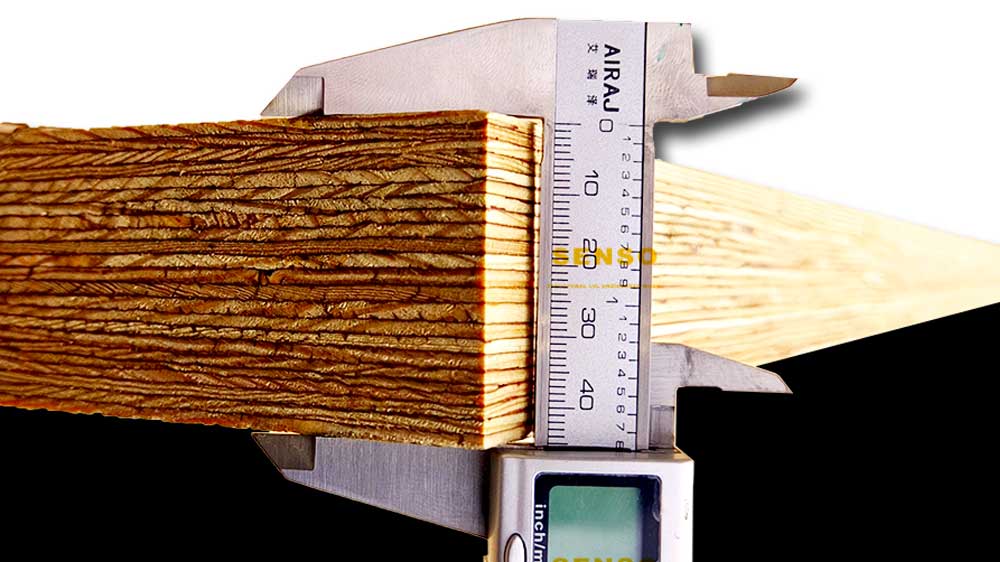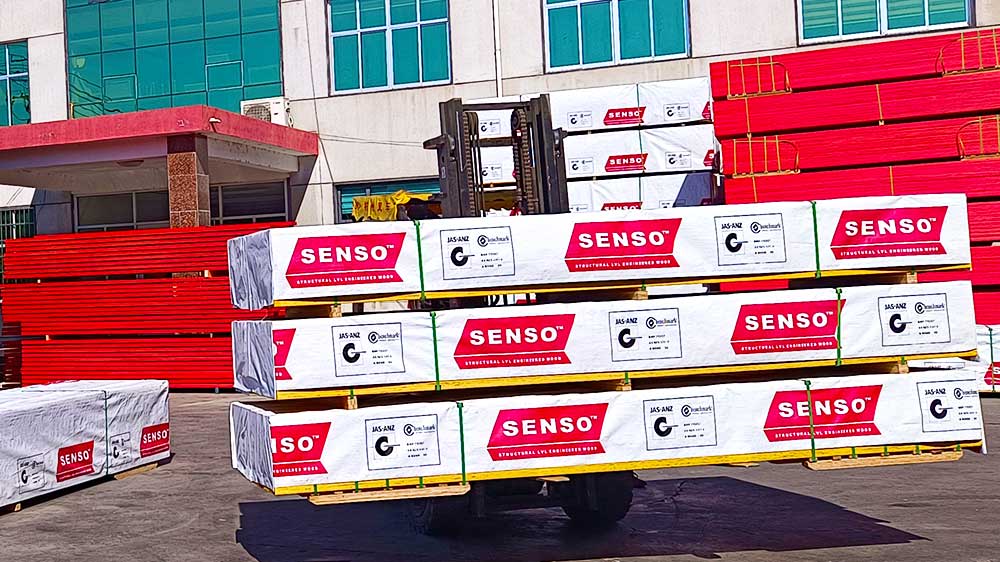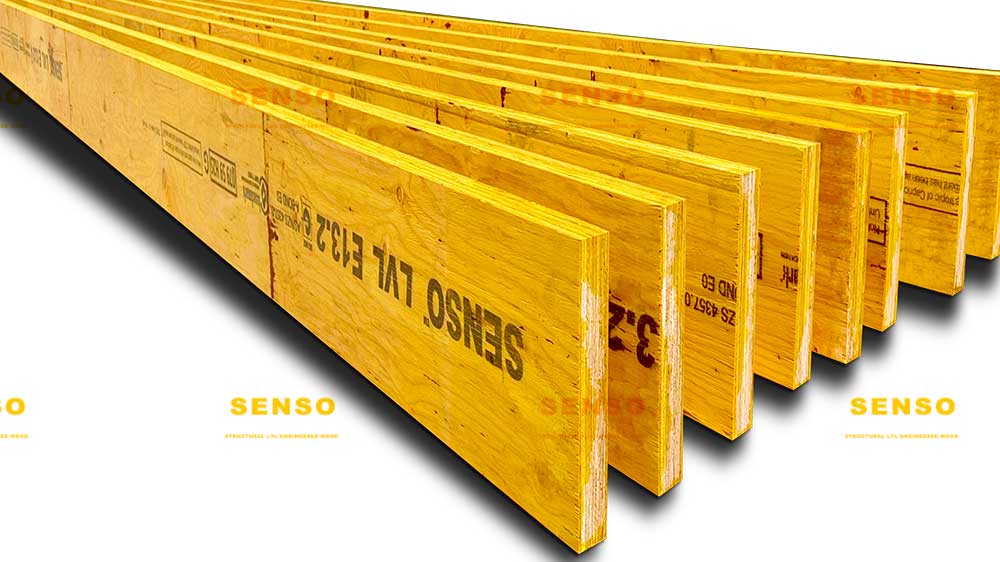Laminated Wood
Definition and Composition
Laminated wood, a composite material, consists of multiple layers of wood bonded together with adhesives. This structure grants unique mechanical properties.
Historical Background
The use of laminated timber can be traced back to ancient civilizations, reflecting a long-standing tradition of innovation.
Scope and Application
From furniture to large-scale construction, laminated wood’s versatility is widely acknowledged.
Manufacturing Techniques of Laminated Wood
Layering Process
The process of layering thin sheets of wood involves precise alignment, ensuring uniform stress distribution.
Adhesive Technology
Adhesives play a critical role in creating laminated timber, requiring a balance of strength and flexibility.
Pressing and Finishing
The final stage involves pressing the layers under controlled conditions, followed by surface finishing.
Benefits of Using Laminated Wood
Strength and Durability
Laminated wood’s structural integrity and longevity set it apart from traditional wood materials.
Aesthetic Appeal
With customization in grain patterns, LVL beams offers a wide range of aesthetic possibilities.
Environmental Considerations
Laminated wood promotes sustainable forestry practices, making it an environmentally conscious choice.
Current Trends in Laminated Wood Industry
Innovation in Design
New design methodologies are expanding the potential applications of laminated timber.
Regulation and Standards
Governments and regulatory bodies are shaping guidelines that affect the production and usage of structural LVL.
Technological Advancements
The continuous improvement in technology is redefining how laminated wood is manufactured and utilized.

Environmental Impact of Laminated Wood
Sustainable Forestry Practices
Laminated wood’s utilization of small timber pieces promotes responsible forestry, conserving valuable resources.
Recycling and Waste Management
The ability to recycle laminated wood reduces waste, contributing to a more sustainable environment.
Energy Efficiency
Manufacturing laminated timber demands less energy compared to metals, thus minimizing environmental footprints.
Economic Considerations in the Laminated Wood Industry
Cost Efficiency
Laminated wood’s affordability is a significant factor for its popularity, especially in large-scale projects.
Market Trends
The global demand for laminated wood is on the rise, driven by urbanization and construction booms.
Trade and Export Dynamics
Laminated wood’s trade is influenced by international regulations, local market needs, and economic policies.
Challenges Facing the Laminated Wood Industry
Quality Control
Maintaining consistent quality in laminated wood requires rigorous standards, advanced technology, and regular inspections.
Environmental Regulations
Compliance with environmental regulations can be challenging, particularly in regions with strict guidelines.
Supply Chain Complexities
Laminated wood’s production relies on a network of suppliers, manufacturers, and distributors, which must be managed efficiently.
Future Prospects of Laminated Wood
Innovative Research
New research initiatives are underway, focusing on enhancing laminated wood’s properties and applications.
Growth in Emerging Markets
Laminated wood is gaining traction in developing countries, opening new avenues for growth.
Integration with Modern Technology
The use of cutting-edge technology like AI and IoT will transform how laminated timber is designed, produced, and utilized.
A Deeper Look at Laminated Wood in Specific Sectors
Construction Industry
Laminated wood is revolutionizing construction by offering cost-effective and sustainable building solutions.
Furniture and Interior Design
In the design world, structural LVL allows for creativity and innovation, catering to diverse tastes and preferences.
Transportation Sector
The transportation industry is beginning to explore laminated timber for lightweight and robust components.
Case Studies and Applications of Laminated Wood
Iconic Buildings
The utilization of laminated wood in famous buildings showcases its architectural capabilities and aesthetic appeal.
Infrastructure Development
Several cities have adopted LVL beams in infrastructure projects, demonstrating its versatility and strength.
Educational Facilities
Laminated wood has been used to create inspiring educational environments, promoting sustainable design principles.
Comparative Analysis: Laminated Wood vs. Other Materials
Strength and Durability
Laminated wood offers a high strength-to-weight ratio, often exceeding traditional construction materials like steel or concrete.
Environmental Footprint
The production of structural LVL consumes fewer resources and emits less CO2, making it a preferred green alternative.
Cost Considerations
Laminated wood provides an economical option without compromising quality or performance.
Legal and Regulatory Framework
Building Codes
International building codes increasingly recognize laminated timber as a viable construction material, supporting its wider adoption.
Safety Regulations
Safety guidelines ensure that laminated wood meets rigorous standards for fire resistance, structural integrity, and other essential factors.
Intellectual Property and Standards
Patent laws and standardized industry practices help maintain innovation and uniformity in the LVL beams sector.
Technological Advancements in Laminated Wood
Manufacturing Innovations
Cutting-edge technologies are being developed to enhance laminated wood’s manufacturing efficiency and precision.
Design Software Integration
Laminated wood’s compatibility with modern design software allows architects and engineers to realize complex structures.
Material Science Breakthroughs
Ongoing research in material science is yielding new structural LVL composites with enhanced properties.
Consumer Perception and Market Strategies
Branding and Marketing
Effective branding and marketing play vital roles in making laminated timber an attractive option for consumers.
Customer Education
Educating customers about the benefits of laminated wood can overcome misconceptions and increase market acceptance.
Competitive Landscape
Understanding the competitive dynamics of the LVL beams market is crucial for strategic planning and business growth.
Future Prospects and Challenges for Laminated Wood
Sustainability and Green Building Movement
The increasing global focus on sustainability will likely drive further adoption of laminated wood. The material’s environmental benefits align with the green building movement, fostering innovation and growth.
Market Expansion and Global Reach
As awareness of laminated wood’s benefits grows, market expansion into new regions and industries is anticipated. However, this growth may face challenges such as regulatory hurdles, cultural preferences, and economic factors.
Research and Development Opportunities
Continued research and development in the field of structural LVL will unlock new applications and enhance existing properties. Investment in research will be crucial for maintaining a competitive edge.
Implications for Different Stakeholders
Manufacturers and Suppliers
Laminated wood manufacturers and suppliers must adapt to changing market dynamics, regulatory landscapes, and consumer preferences to succeed in a competitive environment.
Designers and Architects
For designers and architects, laminated timber offers a unique blend of functionality and aesthetics. Ongoing education and collaboration with manufacturers will be essential to leverage its full potential.
Policymakers and Regulators
Policymakers and regulators play a vital role in shaping the future of laminated timber. Creating supportive policies and maintaining rigorous standards will be key to fostering industry growth.
Ethical Considerations
Ethical Sourcing and Production
Ensuring ethical sourcing and production of LVL beams involves careful consideration of environmental impact, labor practices, and community engagement.
Consumer Rights and Transparency
Protecting consumer rights and promoting transparency in LVL beams products require clear labeling, honest marketing, and adherence to quality standards.
Education and Training
Professional Development
Specialized training programs and continuous professional development will be essential for industry professionals to keep pace with technological advancements and best practices in laminated wood.
Academic Collaboration
Collaboration between academic institutions and industry can foster innovation, research, and education in the field of structural LVL, enriching the talent pool and driving progress.

Synthesizing Insights: A Comprehensive Perspective
This treatise has explored the multifaceted world of structural LVL, delving into its properties, applications, market dynamics, challenges, and opportunities. From architectural marvels to technological innovations, laminated timber stands as a testament to human ingenuity and sustainable development.
SENSO Laminated wood offers a promising pathway to a sustainable future, but realizing its full potential requires a concerted effort from various stakeholders. Collaboration, innovation, ethical considerations, and education will be central to shaping the future of laminated timber and maximizing its contribution to society.
Post time: Nov-21-2023


